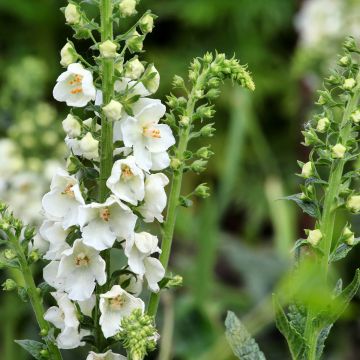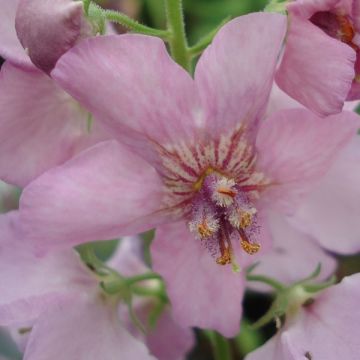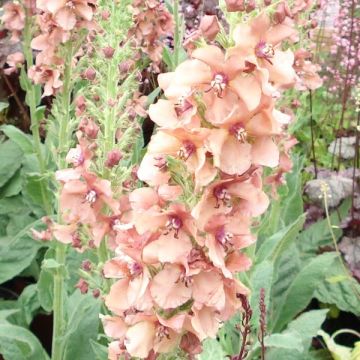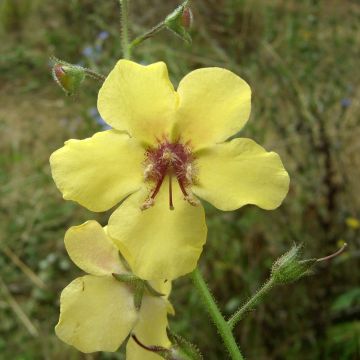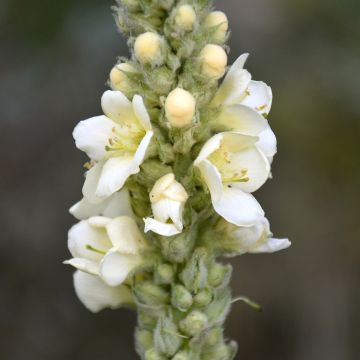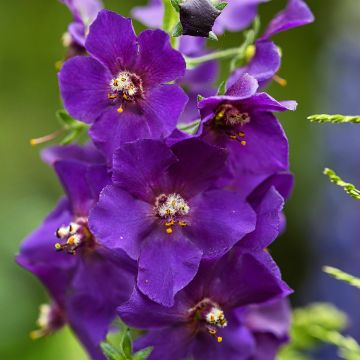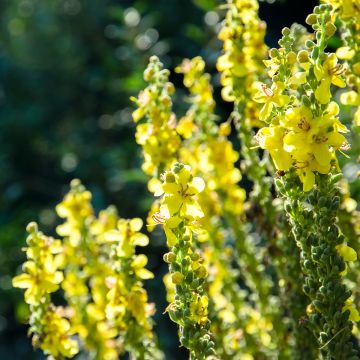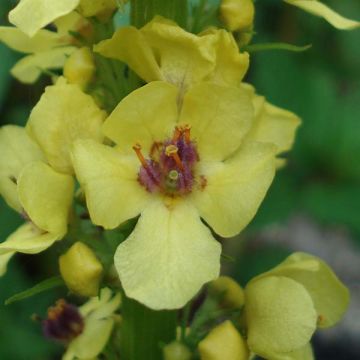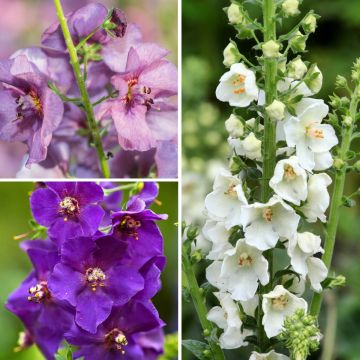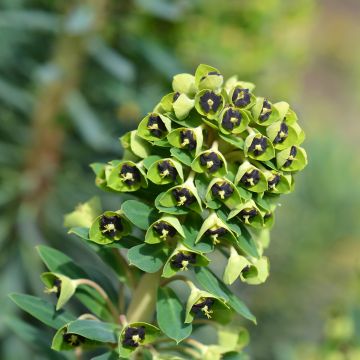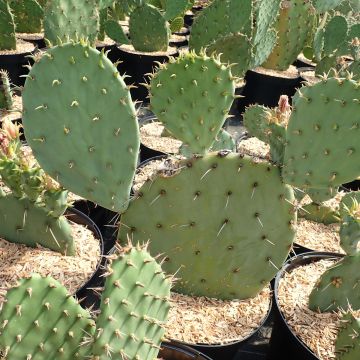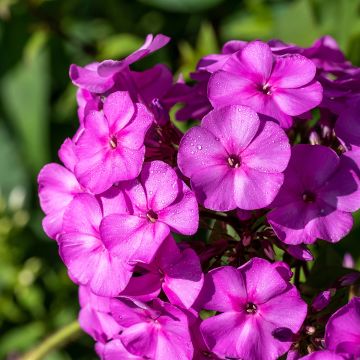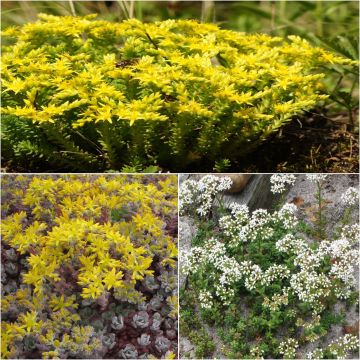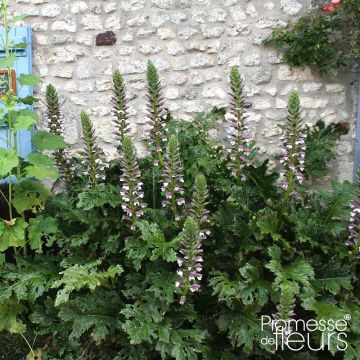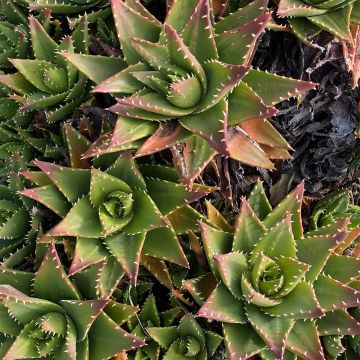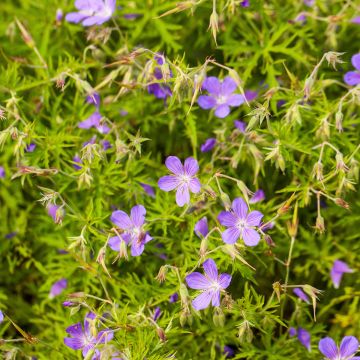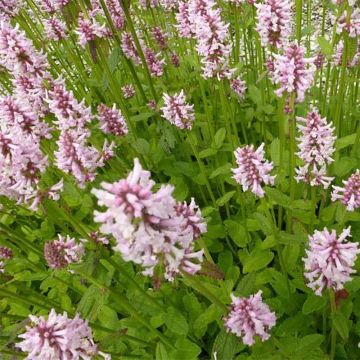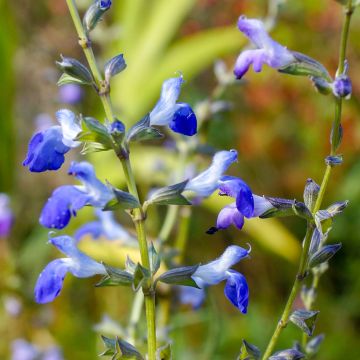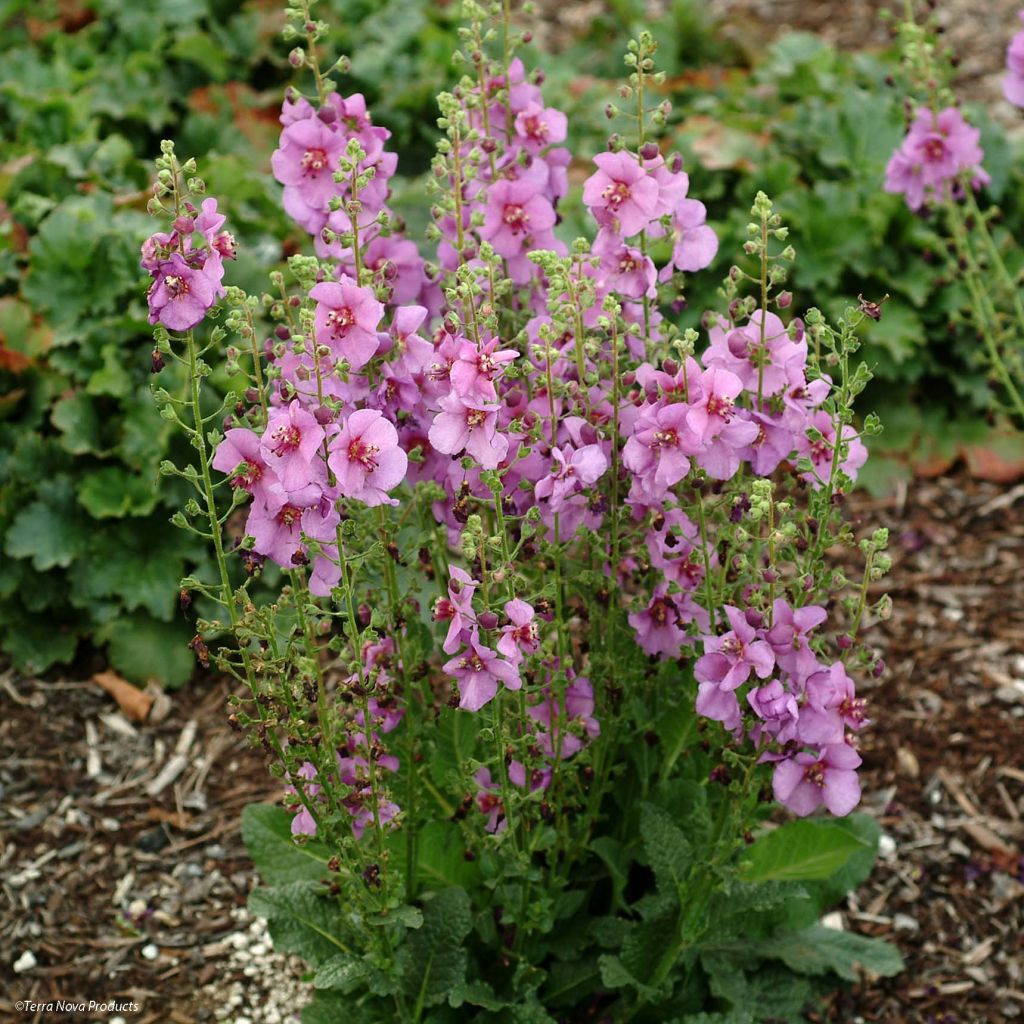

Verbascum Sugar Plum - Molène hybride
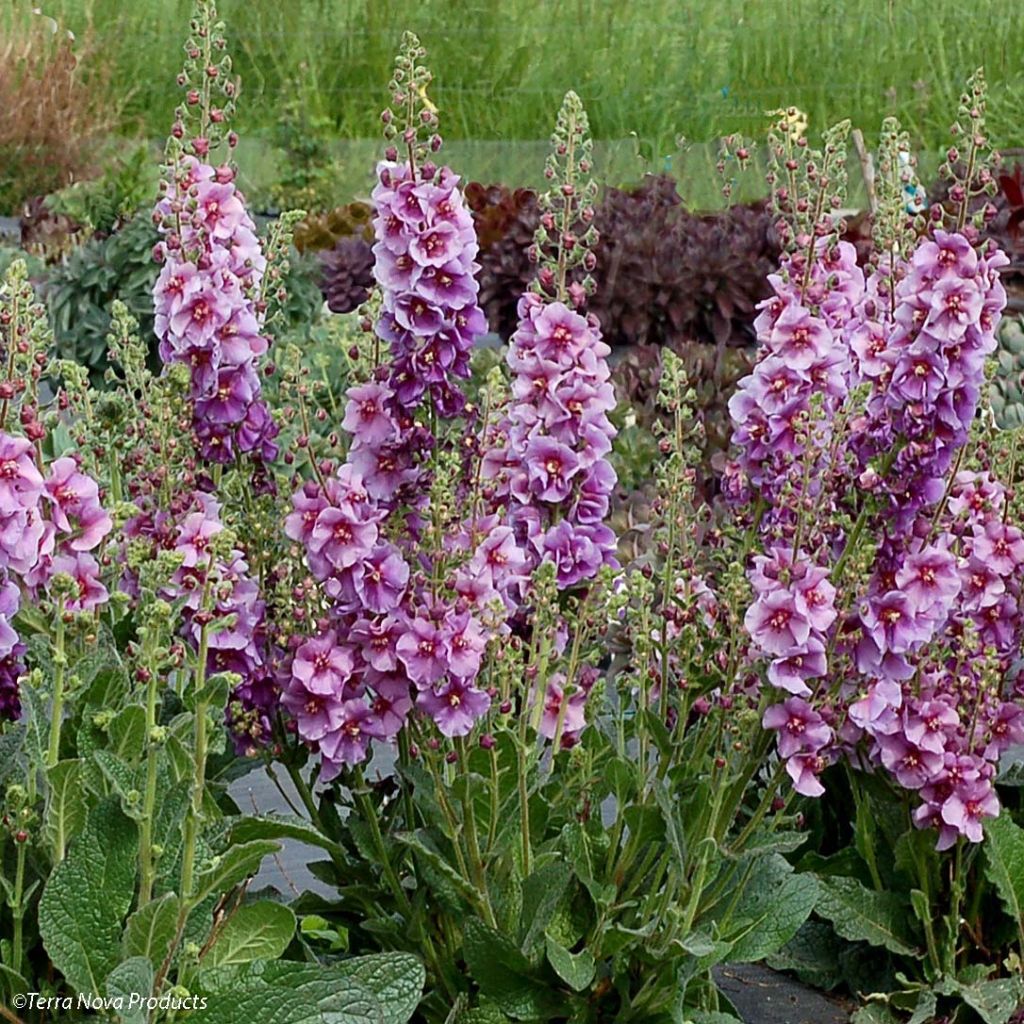

Verbascum Sugar Plum - Molène hybride
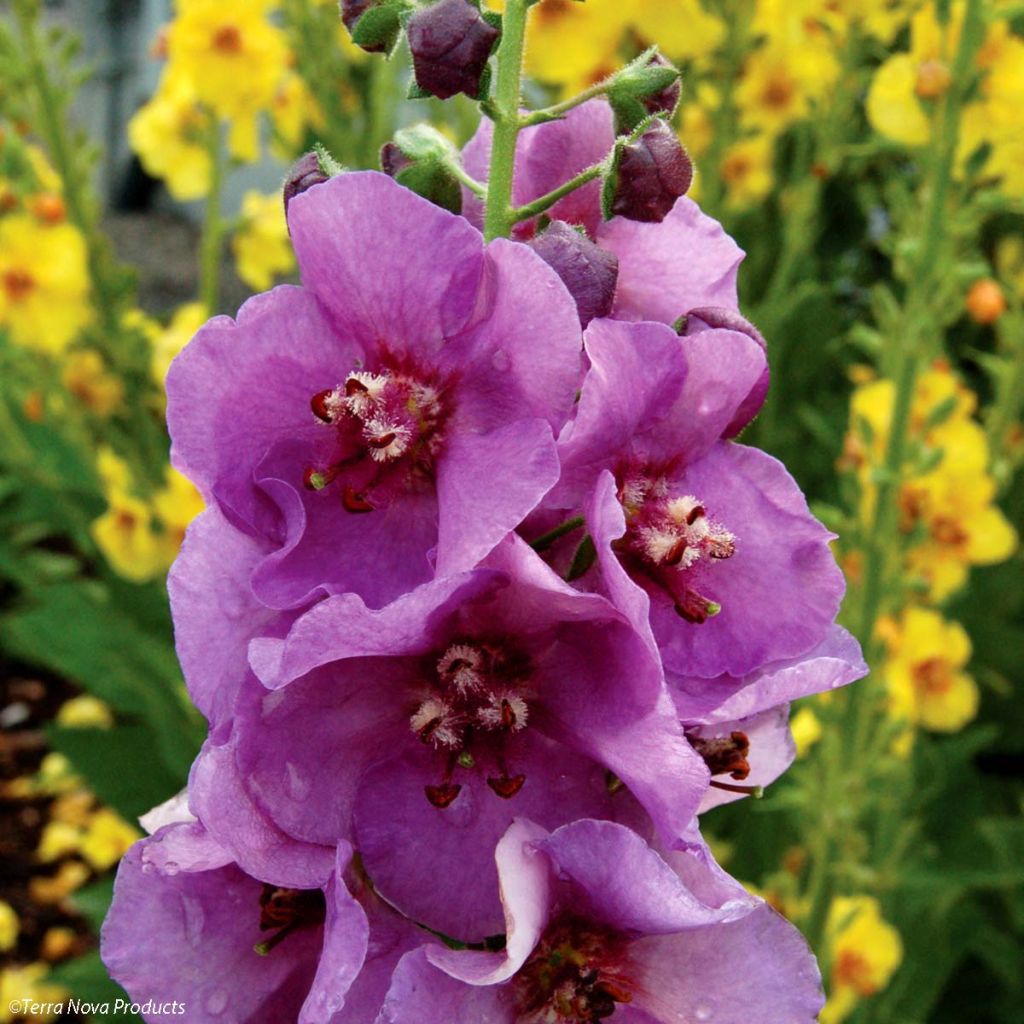

Verbascum Sugar Plum - Molène hybride
Verbascum Sugar Plum - Mullein
Verbascum Sugar Plum
Mullein
plant received in good condition too early to give a review on a newly planted young plant
remy, 30/04/2021
This item cannot be shipped to the selected country
Delivery charge from €5.90
More information
Schedule delivery date,
and select date in basket
This plant carries a 12 months recovery warranty
More information
We guarantee the quality of our plants for a full growing cycle, and will replace at our expense any plant that fails to recover under normal climatic and planting conditions.
From €5.90 for pickup delivery and €6.90 for home delivery
Express home delivery from €8.90.

Does this plant fit my garden?
Set up your Plantfit profile →
Description
Verbascum 'Sugar Plum' is a brand new compact variety of hybrid mullein which stands out for the duration and abundance of its flowers. From May to August, if the soil remains moist, it erects branched spikes loaded with beautiful, large flowers in shades of light plum to smoky mauve with a small purple-violet throat above a rosette of downy leaves. It is an excellent perennial for well-drained soil in a sunny border or flower pots on the terrace or balcony.
'Sugar Plum' Hybrid Mullein, recently introduced by the American company Terra Nova Nurseries, is one of a new line of compact, undemanding, floriferous hybrids, with better longevity in well-drained soil. This plant belongs to the Scrophulariaceae family and is derived from Verbascum phoeniceum, among others, native to Central-Eastern Europe and the Middle East.
Sugar Plum will not exceed 40cm (16in) high when in bloom. Its growth is rapid, reaching its final size in one month. This perennial has a semi-evergreen rosette from which long branched floral stems emerge. From May-June to July-August it flowers in pyramidal spikes 30-40cm (12-16in) high, composed of numerous wide cup-shaped, mauve flowers with a purple centre, tightly packed against each other and opening randomly along the spike. The rosettes consist of flexible, elongated, wavy, dark grey-green, 15cm (6in) long leaves. This mullein is nectar-rich and loved by bees. This sterile variety does not exhaust itself by producing seeds, which means it will flower for longer.
Verbascum 'Sugar Plum' is a boon for 'impossible' slopes, where it will look good with valerians like Callirhoe involucrata, and stonecrops. Natural scenes, in slightly wild areas of the garden, can be transformed by hybrid mulleins. Plant them with dwarf foxgloves, compact Buenos Aires verbena, wallflowers, purple heucheras, blue lavenders, wild chicory, thyme or rosemary thyme, perennial flax or clouded cachrys (Cachrys alpina). It can also create a very beautiful flowerpot, with lobelias or nemesis for example.
Report an error about the product description
Verbascum Sugar Plum - Mullein in pictures
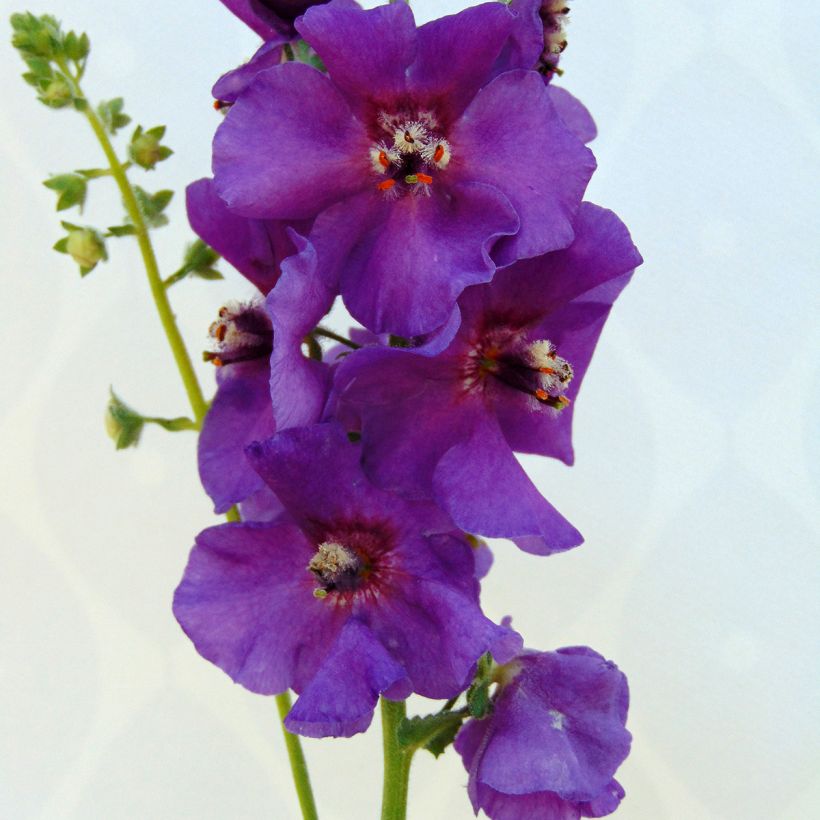

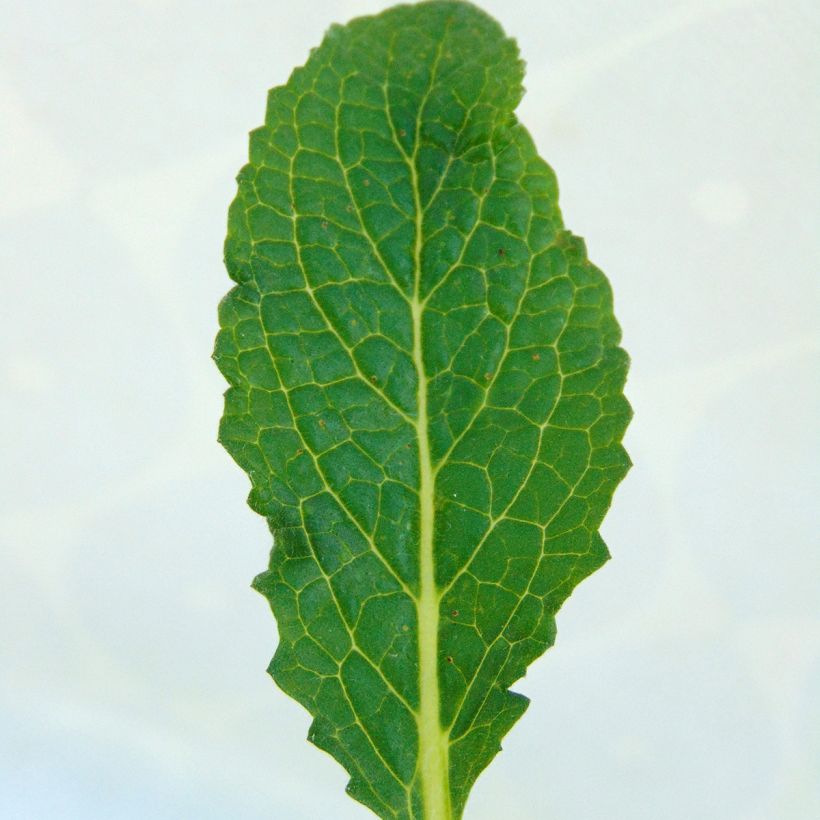

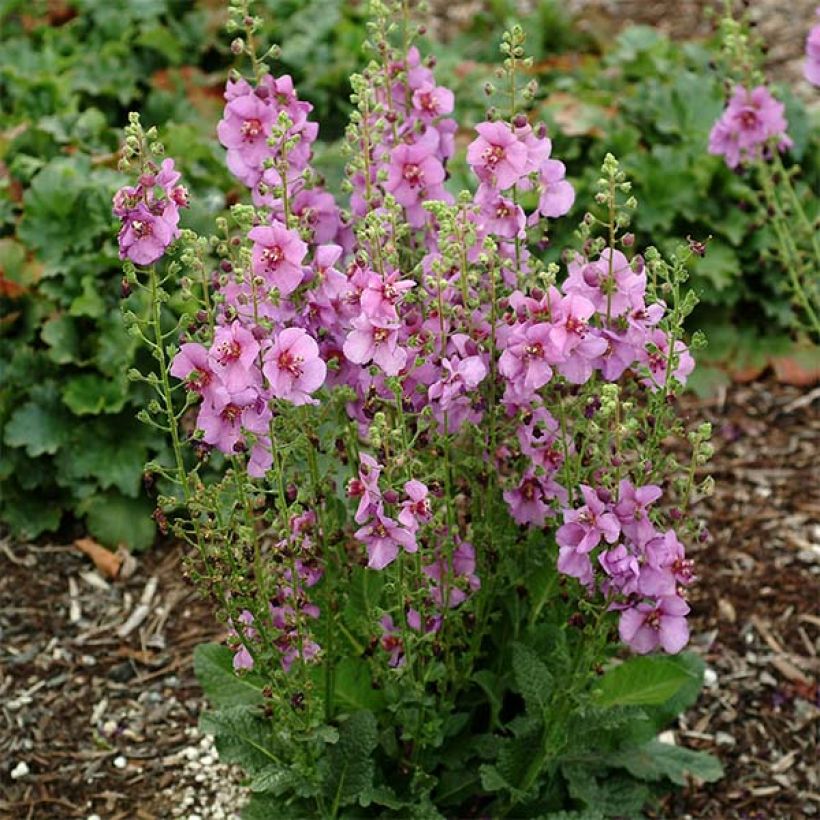

Flowering
Foliage
Plant habit
Botanical data
Verbascum
Sugar Plum
Scrophulariaceae
Mullein
Cultivar or hybrid
Other Verbascum - Mullein
Planting and care
Verbascum 'Sugar Plum' should be planted in full sun, partial shade in hot climates. This mullein should be planted in spring, in ordinary, light and porous, well-drained soil, and prefers moist to dry limestone soil. It does not tolerate soils which are waterlogged in winter, which would kill it. Cut the faded flowers at the base to promote more flowers and the longevity of the plant. Prune unattractive dry parts and clean the clump no later than the end of winter. In pots, water and feed well, while allowing the substrate to dry slightly between each watering.
Planting period
Intended location
Care
-
, onOrder confirmed
Reply from on Promesse de fleurs
Summer flowering perennials
Haven't found what you were looking for?
Hardiness is the lowest winter temperature a plant can endure without suffering serious damage or even dying. However, hardiness is affected by location (a sheltered area, such as a patio), protection (winter cover) and soil type (hardiness is improved by well-drained soil).

Photo Sharing Terms & Conditions
In order to encourage gardeners to interact and share their experiences, Promesse de fleurs offers various media enabling content to be uploaded onto its Site - in particular via the ‘Photo sharing’ module.
The User agrees to refrain from:
- Posting any content that is illegal, prejudicial, insulting, racist, inciteful to hatred, revisionist, contrary to public decency, that infringes on privacy or on the privacy rights of third parties, in particular the publicity rights of persons and goods, intellectual property rights, or the right to privacy.
- Submitting content on behalf of a third party;
- Impersonate the identity of a third party and/or publish any personal information about a third party;
In general, the User undertakes to refrain from any unethical behaviour.
All Content (in particular text, comments, files, images, photos, videos, creative works, etc.), which may be subject to property or intellectual property rights, image or other private rights, shall remain the property of the User, subject to the limited rights granted by the terms of the licence granted by Promesse de fleurs as stated below. Users are at liberty to publish or not to publish such Content on the Site, notably via the ‘Photo Sharing’ facility, and accept that this Content shall be made public and freely accessible, notably on the Internet.
Users further acknowledge, undertake to have ,and guarantee that they hold all necessary rights and permissions to publish such material on the Site, in particular with regard to the legislation in force pertaining to any privacy, property, intellectual property, image, or contractual rights, or rights of any other nature. By publishing such Content on the Site, Users acknowledge accepting full liability as publishers of the Content within the meaning of the law, and grant Promesse de fleurs, free of charge, an inclusive, worldwide licence for the said Content for the entire duration of its publication, including all reproduction, representation, up/downloading, displaying, performing, transmission, and storage rights.
Users also grant permission for their name to be linked to the Content and accept that this link may not always be made available.
By engaging in posting material, Users consent to their Content becoming automatically accessible on the Internet, in particular on other sites and/or blogs and/or web pages of the Promesse de fleurs site, including in particular social pages and the Promesse de fleurs catalogue.
Users may secure the removal of entrusted content free of charge by issuing a simple request via our contact form.
The flowering period indicated on our website applies to countries and regions located in USDA zone 8 (France, the United Kingdom, Ireland, the Netherlands, etc.)
It will vary according to where you live:
- In zones 9 to 10 (Italy, Spain, Greece, etc.), flowering will occur about 2 to 4 weeks earlier.
- In zones 6 to 7 (Germany, Poland, Slovenia, and lower mountainous regions), flowering will be delayed by 2 to 3 weeks.
- In zone 5 (Central Europe, Scandinavia), blooming will be delayed by 3 to 5 weeks.
In temperate climates, pruning of spring-flowering shrubs (forsythia, spireas, etc.) should be done just after flowering.
Pruning of summer-flowering shrubs (Indian Lilac, Perovskia, etc.) can be done in winter or spring.
In cold regions as well as with frost-sensitive plants, avoid pruning too early when severe frosts may still occur.
The planting period indicated on our website applies to countries and regions located in USDA zone 8 (France, United Kingdom, Ireland, Netherlands).
It will vary according to where you live:
- In Mediterranean zones (Marseille, Madrid, Milan, etc.), autumn and winter are the best planting periods.
- In continental zones (Strasbourg, Munich, Vienna, etc.), delay planting by 2 to 3 weeks in spring and bring it forward by 2 to 4 weeks in autumn.
- In mountainous regions (the Alps, Pyrenees, Carpathians, etc.), it is best to plant in late spring (May-June) or late summer (August-September).
The harvesting period indicated on our website applies to countries and regions in USDA zone 8 (France, England, Ireland, the Netherlands).
In colder areas (Scandinavia, Poland, Austria...) fruit and vegetable harvests are likely to be delayed by 3-4 weeks.
In warmer areas (Italy, Spain, Greece, etc.), harvesting will probably take place earlier, depending on weather conditions.
The sowing periods indicated on our website apply to countries and regions within USDA Zone 8 (France, UK, Ireland, Netherlands).
In colder areas (Scandinavia, Poland, Austria...), delay any outdoor sowing by 3-4 weeks, or sow under glass.
In warmer climes (Italy, Spain, Greece, etc.), bring outdoor sowing forward by a few weeks.

































